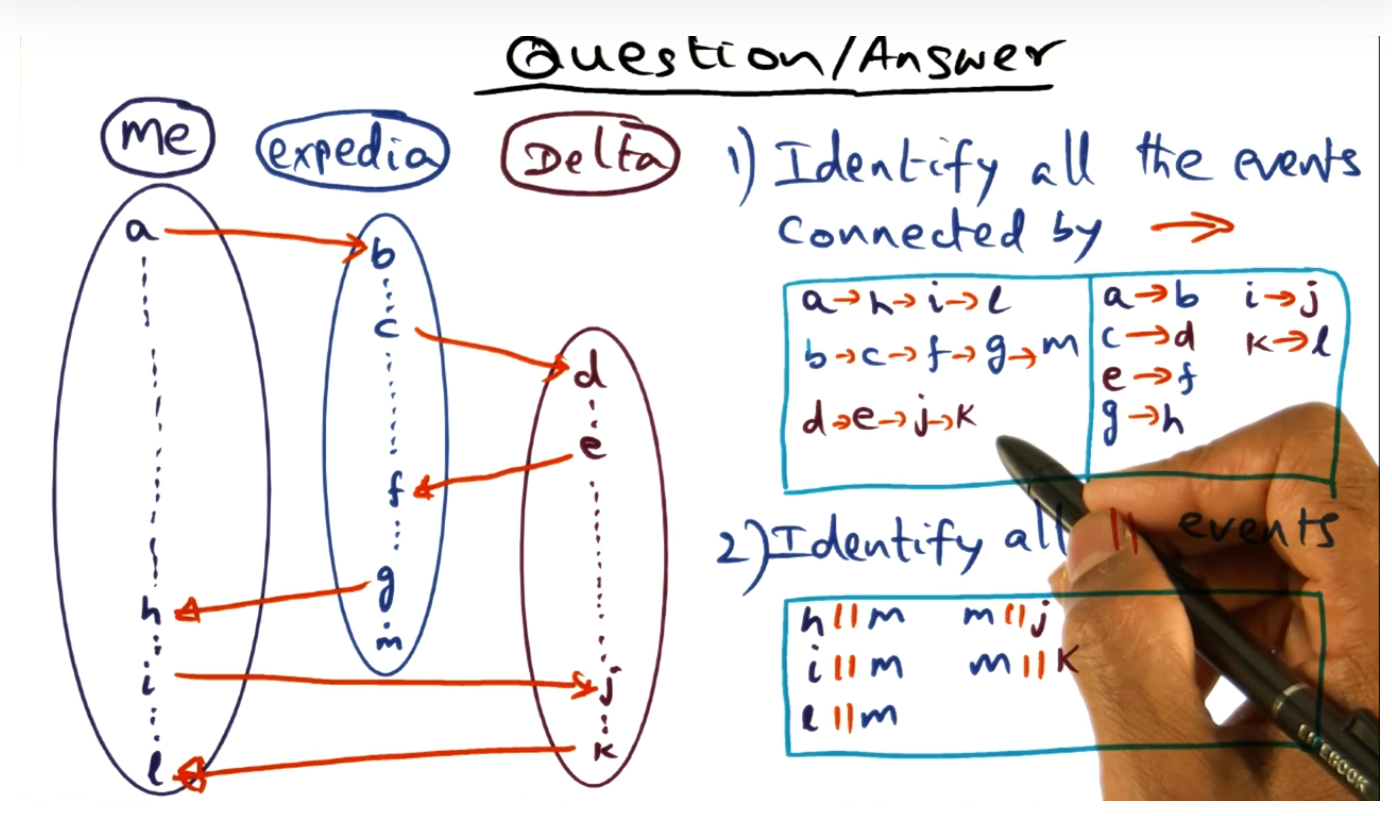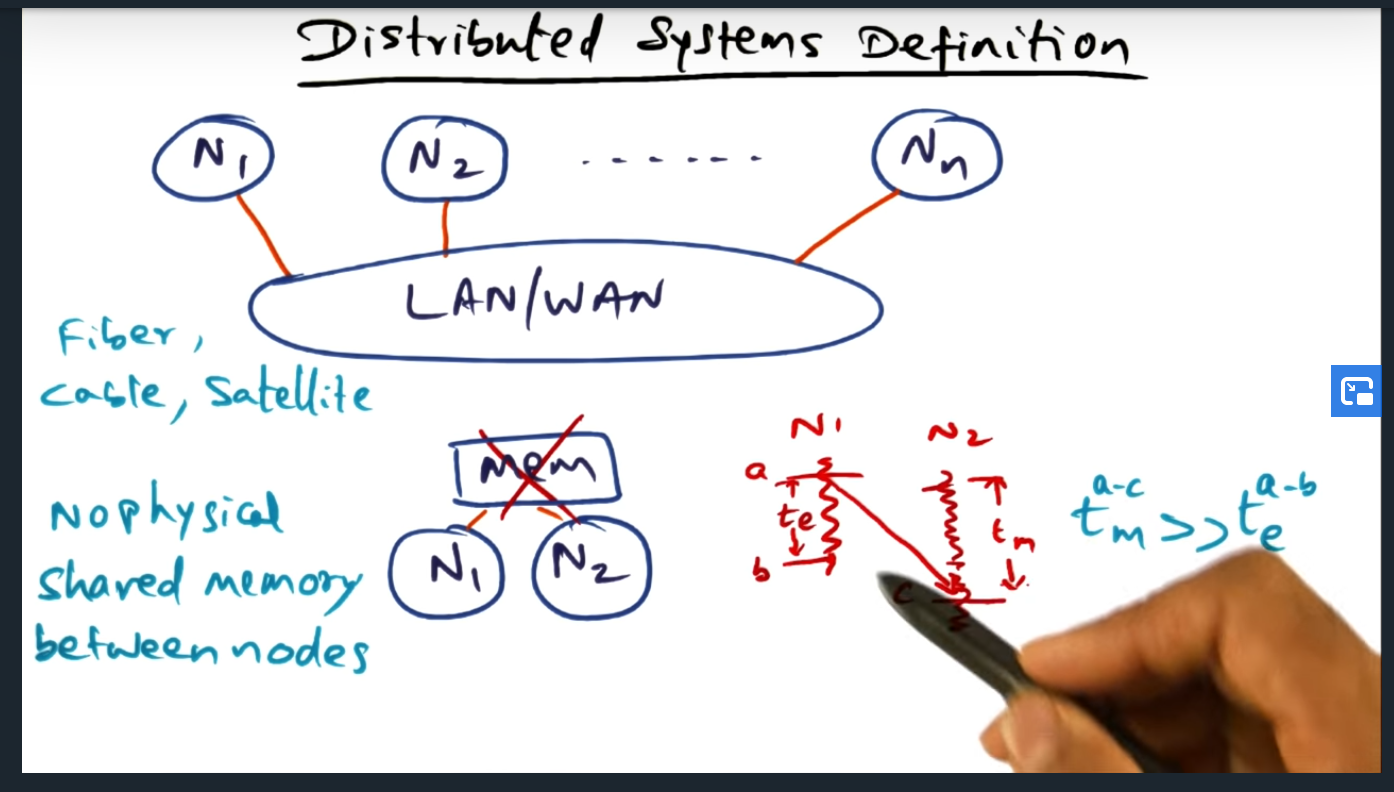The main take away with the introduction to distributed systems lectures is that as system designers, we need to carefully inspect our program and identify what events in our system can run concurrently (as well as what cannot run concurrency or must be serialized). To this end, we need to identify what events must happen before other events. And most importantly, we should only consider running distributed systems to increase performance when the time it takes to process an event exceeds the time it takes to send a message between nodes. Otherwise, just stick to local computation.
Key Words: happened before, concurrent events, transitive
Introduction
Summary
Lots of similarity between parallel systems and distributed systems. Symbiotic relationship between hardware and software (protocol stack)
Quiz: What is a distributed system?
Summary
Distributed systems are connected via a LAN/WAN, communicate only via messages, and message time is greater than the event time (not sure what this means really)
Distributed Systems Definition
Summary
Key Words: event computation time, message transmission time; Third property is that message communication time is significantly larger than the event computation time (on a single node). Leslie’s definition is: A system is distributed if the message transmission time (TM) is not negligible to the time between events in a single process. The main take away is that the algorithms or applications run on distributed noes must take longer (in computation time) than the communication otherwise no benefit of parallelism.
A fun example
Summary
Key Words: happened before relationship; Set of beliefs ingrained in a distributed system example. Within a single process, events are totally ordered. Second belief is that you cannot receive the receipt of a message until after the initial message is sent.
Happened Before Relationship

Summary
The happened before relationship means one of two things. For events A and B, it means that 1) A and B are in the same process or 2) A is the sender of the message and B is the receiver of the message
Quiz Relation
Summary
You cannot assume or say anything about the order of A and B
Happy before relationship (continued)
Summary
When you cannot assume the ordering of events, they might be concurrent. One event might run before the other during one invocation. Then perhaps the order gets flipped. So, these types of events are not happened before, no apparent relationship between the two events. But my question is: what are some of the synchronization and communication and timing issues that he had mentioned?
Identifying Events

Summary
Remember the events that “happened before” are not only between processes but within processes themselves. Also, two concurrent events are basically when we cannot guarantee whether or not an event in process A will run before an event in process B, again between processes
Example of Event Ordering
Summary
Basically the events between processes can be concurrent since there’s no guarantee in terms of wall clock time when they will execute, no ordering
